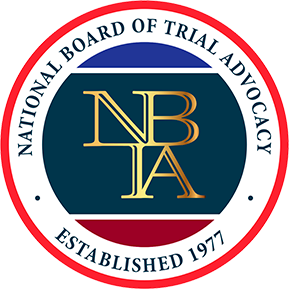A brachial plexus injury isn’t just another medical complication—it’s a life-altering event that can leave a newborn with a weakened or paralyzed arm and parents desperate for answers. These injuries often occur when a baby’s shoulder becomes trapped during delivery and too much force is applied, stretching or tearing the delicate network of nerves that control movement and feeling in the arm. For many families, the moment that should have been joyful turns into one filled with fear, uncertainty, and frustration.
Georgia Brachial Plexus Injury Lawyer
At McArthur Law Firm, the team represents Georgia families whose children have suffered brachial plexus injuries resulting from preventable delivery errors or medical negligence. The firm’s attorneys know how to uncover the truth behind what happened in the delivery room, determine who is legally responsible, and pursue justice through the courts when necessary. Each case is approached with compassion for what the family has endured and with determination to hold negligent providers accountable.
In the following sections, the firm outlines the key facts about brachial plexus injury cases in Georgia—how these injuries occur, who may be at fault, the laws that apply, the types of compensation that may be available, and how a dedicated Georgia brachial plexus injury lawyer can fight for a child’s recovery and a family’s peace of mind.
McArthur Law Firm serves the entire state of Georgia, including: Fulton County, Bibb County and Fulton County, as well as Clayton County, Cherokee County, Forsyth County, and surrounding communities. For more information about the McArthur Law Firm or to set up a free consultation to learn what we may be able to do to help you with your Brachial Plexus accident and/or injury case, give us a call at one of our offices in Georgia or fill out our online contact form.
- Atlanta Office: 404-565-1621
- Macon Office: 478-238-6600
- Warner Robins: 478-551-9901
Overview of Brachial Plexus Injuries in Georgia
- Types of Brachial Plexus Birth Injuries
- Causes of Brachial Plexus Birth Injuries
- Where Brachial Plexus Birth Injuries Happen in Georgia
- Who Is at Fault for a Brachial Plexus Birth Injury in Georgia
- How a Georgia Brachial Plexus Birth Injury Lawyer Can Help
- Frequently Asked Questions About Brachial Plexus Birth Injuries
- Resources
Types of Brachial Plexus Birth Injuries
The brachial plexus is a complex network of nerves that begins in the spinal cord at the base of the neck and extends through the shoulder down into the arm and hand. When a baby suffers a brachial plexus birth injury, it means the group of nerves that control movement and sensation in the shoulder, arm, and hand have been stretched, torn, or detached during delivery. These nerves originate at the spinal cord in the neck and travel through the shoulder to the arm. When damaged, the baby may have difficulty moving one arm, lifting the shoulder, or gripping objects.
Erb’s Palsy — This type of injury affects the upper part of the brachial plexus, usually involving the C5 and C6 nerves. It often occurs when the baby’s shoulder is pulled during delivery, stretching the neck and shoulder nerves. In these cases, the baby may be unable to lift the arm or bend the elbow, and the arm may hang straight down with the palm facing backward. Some infants regain movement with therapy, while others require surgery for nerve repair.
Klumpke’s Palsy — When the lower nerves of the brachial plexus (C8 and T1) are affected, the injury impacts the wrist and hand. Babies with this condition might move their shoulder but have little or no control over their fingers. In some cases, the hand may appear limp or curled, often described as a “claw hand.” The severity can vary, and nerve studies help determine if surgery is needed.
Total Plexus Injury — This occurs when all five nerve roots of the brachial plexus are damaged. It is the most devastating form because it affects the entire arm from shoulder to hand. The baby may have no movement or sensation in the affected arm at all. These injuries often require extensive medical intervention, and the long-term outcome depends on the extent of nerve recovery and the success of early treatment.
Avulsion — In the most severe form of injury, the nerve root is completely torn away from the spinal cord. This damage cannot heal on its own because the nerve is no longer connected to the spinal cord. Surgery may be able to transfer nerves from another part of the body to restore partial function, but full recovery is rarely possible.
Rupture — A rupture means the nerve is torn, but not at the point where it connects to the spinal cord. The nerve can’t repair itself naturally, but surgical grafting may restore some communication between the brain and the arm muscles. The degree of recovery depends on how early the rupture is detected and treated.
Neuroma — When a torn nerve starts to heal, scar tissue can form where the break occurred. This scar tissue, called a neuroma, can press on healthy nerve fibers and block normal signals. Babies may have limited strength or sensation even after other nerves heal. Microsurgery may help improve function, but outcomes vary based on the size and location of the scar tissue.
Neurapraxia (Stretch Injury) — This is the mildest and most common type of brachial plexus birth injury. It occurs when the nerves are stretched but not torn. In these cases, the infant may show temporary weakness or limited motion in the affected arm. Most infants recover within weeks or months with gentle physical therapy, though medical evaluation is important to ensure there is no deeper nerve damage.
Causes of Brachial Plexus Birth Injuries
Difficult or Prolonged Labor — A long or stalled delivery increases the risk of nerve injury. When contractions are strong or labor lasts many hours, a baby’s shoulder can become trapped in the birth canal. This pressure can stretch the brachial plexus nerves.
Shoulder Dystocia — This happens when a baby’s shoulder gets stuck behind the mother’s pubic bone after the head has been delivered. Doctors must act immediately to free the shoulder, but if too much force is used, the delicate nerves in the neck and shoulder can be stretched or torn.
Improper Use of Delivery Tools — Forceps and vacuum extractors are sometimes used to help guide a baby through the birth canal. However, when these tools are applied incorrectly or with too much pressure, they can cause severe stretching of the neck and shoulder, leading to nerve damage.
Large Babies (Macrosomia) — Babies weighing more than eight pounds, thirteen ounces are considered large and have a greater chance of shoulder dystocia. Their size makes it harder for them to pass through the birth canal without complications, especially if the delivery is vaginal.
Breech Birth — When a baby is delivered feet or buttocks first, the arms and shoulders are more likely to be stretched as the doctor helps guide the baby out. This abnormal position increases the risk of damage to the lower brachial plexus nerves.
Maternal Health Factors — Conditions like gestational diabetes, obesity, or a small pelvic size can increase the likelihood of a difficult delivery. These factors can make it harder for the baby to move smoothly through the birth canal, raising the risk of a brachial plexus injury.
Emergency Deliveries — In some cases, complications during delivery require quick decisions. When a baby shows signs of distress, healthcare providers may act urgently, sometimes using excessive force to complete the birth. If this happens, the baby’s neck and shoulder nerves can be stretched or torn.
Where Brachial Plexus Birth Injuries Happen in Georgia
Atlanta Hospitals — The Atlanta area has some of the busiest maternity units in the state, including Grady Memorial Hospital, Emory University Hospital Midtown, and Northside Hospital. With thousands of births each year, complications like shoulder dystocia and prolonged labor sometimes occur. When doctors or nurses use too much traction during these high-pressure moments, a baby’s brachial plexus nerves can be seriously damaged.
Macon Medical Centers — In Middle Georgia, hospitals such as The Medical Center, Navicent Health, and Atrium Health Navicent in Macon are key delivery hubs for the region. These facilities manage both routine and high-risk pregnancies. When a large baby, breech birth, or emergency delivery is involved, the risk of a brachial plexus injury increases if the delivery team does not follow proper medical protocols.
Regional and Rural Hospitals — Smaller hospitals across Georgia may lack specialized obstetric or neonatal teams. In rural areas, there may be limited access to advanced delivery tools, emergency C-section support, or on-site pediatric neurologists. This can increase the likelihood of birth complications if a difficult delivery occurs and quick expert intervention is unavailable.
Who Is at Fault for a Brachial Plexus Birth Injury in Georgia
Medical Professionals — Obstetricians, nurses, and delivery-room staff may be at fault when improper techniques are used or critical decisions are delayed during childbirth. For instance, if a doctor applies excessive force to a baby’s head or neck during a difficult delivery, misuses forceps or a vacuum extractor, or fails to order a timely C-section, the resulting strain can stretch or tear the nerves in the baby’s shoulder. Under Georgia law — specifically O.C.G.A. § 51-1-27 — any person practicing medicine or surgery for compensation is required to use “a reasonable degree of care and skill.” When this standard is not met and injury results, the provider may be held liable for malpractice.
Hospitals and Delivery Centers — Hospitals may also share responsibility for a brachial plexus birth injury. Under Georgia’s legal doctrine of vicarious liability, hospitals can be held accountable for the negligence of their employees when those acts occur within the scope of their employment. A hospital may also bear independent liability for negligent hiring, training, or supervision. If a facility fails to implement proper emergency procedures or does not adequately prepare staff to manage shoulder dystocia or breech presentations, it may be sued for contributing to the injury.
Breach of Legal Duty — Georgia law recognizes an individual’s right to recover damages when someone violates a duty intended to protect others from harm. According to O.C.G.A. § 51-1-6, if a medical provider fails to act in a manner that prevents foreseeable injury and that failure causes harm, a claim for damages may be pursued. In a birth injury case, this typically involves demonstrating that the provider’s actions fell below the accepted standard of care during delivery.
Expert Affidavit Requirement — Georgia law, under O.C.G.A. § 9-11-9.1, mandates that every medical malpractice complaint be filed with an affidavit from a qualified medical expert. The affidavit must identify at least one specific act of negligence and provide the factual basis for that claim. If a case is filed close to the statute of limitations, plaintiffs may have up to 45 days after filing the complaint to submit the affidavit. Failure to submit it within the required time may result in the court dismissing the case.
Time Limits for Birth Injury Cases — The deadlines for filing a lawsuit depend on the child’s age when the injury occurred. Under O.C.G.A. § 9-3-73, if a child was injured before turning five, parents generally have two years from the child’s fifth birthday to file a malpractice claim. However, no case may be filed after the child’s tenth birthday for injuries that occurred before age five, or more than five years after the negligent act if the child was five or older at the time. These deadlines are strict, making prompt action essential to preserve the child’s rights.
Proving Negligence and Causation — To prevail in a Georgia brachial plexus birth injury claim, the attorney must demonstrate that the provider had a duty of care, breached that duty, and directly caused the child’s injury. This process often involves reviewing delivery notes, fetal monitoring strips, and hospital records, as well as consulting medical experts who can explain how appropriate care could have prevented the injury.
How a Georgia Brachial Plexus Birth Injury Lawyer Can Help
A Georgia Brachial Plexus Birth Injury Lawyer — A Georgia brachial plexus birth injury lawyer focuses on establishing that medical negligence caused a baby’s nerve damage and on pursuing full compensation for the affected family. These cases are highly complex, requiring a combination of medical insight and legal expertise.
Investigation and Evidence — The attorney gathers medical records, delivery notes, and fetal monitoring data to determine how the injury occurred. Working alongside medical experts, the lawyer demonstrates what actions the doctor or hospital should have taken to prevent the injury.
Insurance and Negotiation — The lawyer manages all communication with insurance companies and hospital representatives, protecting the family from being pressured into accepting an inadequate settlement. Damages are calculated based on current and future medical expenses, therapy, and the child’s long-term care requirements.
Filing a Lawsuit — If settlement negotiations fail, the attorney files a lawsuit in compliance with Georgia’s strict procedural standards, including the expert affidavit requirement under O.C.G.A. § 9-11-9.1. The lawyer prepares the case for trial, presenting medical documentation and expert testimony to prove negligence and lasting harm.
Recovering Damages — The attorney seeks compensation for the child’s medical treatment, rehabilitation, pain, suffering, and future needs. In addition, they pursue damages for emotional distress and diminished quality of life as permitted under Georgia tort law.
Why Legal Help Matters — Birth injury cases differ significantly from standard malpractice claims. They require a deep understanding of obstetrics, neonatal medicine, and Georgia’s complex procedural rules. An experienced lawyer ensures that the child’s long-term care needs are met and that the family’s well-being and financial stability are protected.
Frequently Asked Questions About Brachial Plexus Birth Injuries
What is a brachial plexus birth injury?
A brachial plexus birth injury happens when nerves in a baby’s shoulder are stretched or torn during delivery, causing weakness, loss of movement, or arm paralysis.
How do doctors diagnose a brachial plexus injury in newborns?
Doctors diagnose brachial plexus injuries using physical exams, reflex tests, MRIs, and nerve studies to determine the exact type and severity of the nerve damage sustained.
Who is at fault for a brachial plexus birth injury?
Doctors, nurses, or hospitals may be liable for a brachial plexus birth injury if improper delivery techniques or delayed medical decisions caused preventable nerve damage during childbirth.
What compensation can be obtained for a brachial plexus injury?
Compensation may include coverage for medical bills, rehabilitation, surgery, pain, suffering, future care needs, and emotional distress resulting from a brachial plexus injury caused by medical negligence.
How long is allowed to file a brachial plexus birth injury claim?
Under Georgia law, parents generally have until their child’s tenth birthday to file a brachial plexus birth injury claim, depending on the age at which the injury occurred.
Should someone hire a lawyer for a brachial plexus birth injury case?
Yes. A Georgia brachial plexus birth injury lawyer gathers medical evidence, consults expert witnesses, and ensures compliance with strict state filing requirements to pursue maximum compensation.
Resources
Brachial Plexus Birth Injury: Treatment and Interventions — This article from the National Library of Medicine reviews medical treatments and interventions for brachial plexus birth injuries. It explains the causes, recovery expectations, and both non-surgical and surgical options for infants. The source outlines physical therapy, botulinum toxin use, splinting, and various surgical procedures like nerve grafts and transfers.
Brachial Plexus Injury in Newborns — This MedlinePlus resource provides an overview of brachial plexus injuries in newborns. It describes causes, symptoms, risk factors, diagnosis, and treatment options. The article notes that most infants recover within a few months but explains when surgery might be needed.
Medical and Legal Issues Related to Brachial Plexus Injuries in Neonates — This PubMed article examines both medical and legal aspects of neonatal brachial plexus injuries. It reviews causes, diagnostic considerations, and treatment approaches while also addressing malpractice risks and legal responsibilities for healthcare providers.
Hire a Personal Injury Lawyer for Brachial Plexus Injuries in Atlanta, Georgia
McArthur Law Firm serves the cities of Atlanta in Fulton County, Macon in Bibb County, Kathleen in Houston County, Peachtree Corners and Lawrenceville in Gwinnett County, Marietta and Smyrna in Cobb County, Stonecrest, Brookhaven and Dunwoody in Dekalb County, Albany in Dougherty County, Columbus in Muscogee County and throughout the surrounding areas of the state of Georgia.
Contact one of our offices at the following numbers or fill out an online contact form to start building your case.
- Atlanta Office: 404-565-1621
- Macon Office: 478-238-6600
- Warner Robins: 478-551-9901







